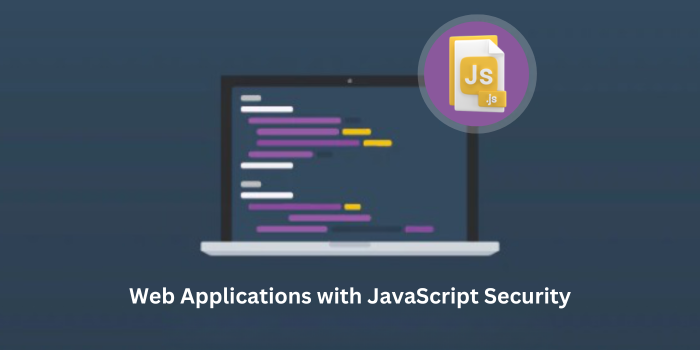Best Practices for Building More Resilient Web Applications with JavaScript Security Features
Offshore software development is a type of business process outsourcing in which a corporation delegates some or all of its software development to programmers based abroad. Companies might hire a single freelance developer for this purpose or a whole development team through a specialist firm. Software engineers and developers on staff at offshore software development firms frequently act as an extension of a client’s company. Offshore software development is an effective way to scale swiftly without the need to hire and train staff, whether it is for a one-time project or on an ongoing basis.
Because it’s simple for beginners, one of the most widely used programming languages is JavaScript. Users may easily construct desktop, mobile, and web applications using only JavaScript, and it has a large and vibrant community.
JavaScript security is mentioned below to help you protect your apps
Produce excellent code
Knowing the ins and outs of each programming language is essential to producing high-quality code because they are all distinct. Since software vulnerabilities that were exploited by an attacker account for up to 90% of computer security events, it is obvious that developers must increase the quality of their code to lower the number of flaws that result in security breaches.
Some recommendations for minimizing bugs include
- Become familiar with key JavaScript language fundamentals. To write high-quality code, one must be familiar with a global context, scope declarations, loose and strict equality operators, hoisting, callbacks, etc.
- Steer clear of functions that interpret strings as code. JavaScript functions like eval, Function, setTimeout, and setInterval are not advised because if used with untrusted data, they could result in cross-site scripting (XSS) attacks.
- Use a linter to spot problems right away. A linter is a program that checks source code for grammatical mistakes, logical mistakes, and code smells. In essence, it aids in code improvement. since it can be expanded upon and is simple to use, the ESLint linter.
- Create tests to find errors in your reasoning. Make sure your thoughts, your code, and your expectations are all in sync by writing tests. This can also be used as a tool for documentation.
Determine whether external libraries are necessary
JavaScript developers have taken the idea of code reuse to the limit by developing packages even for the most straightforward operations. However, uncontrolled package reuse exposes JavaScript applications to problems and security risks. Think of dependencies as the software required to make a project work. There may be more failure points the more of it is required. To find open-source software flaws, vulnerabilities, and outdated dependencies, you should also employ software composition analysis (SCA) tools.
Do not rely on user feedback
The majority of web apps let users input data using text. The data is mirrored in the web application somewhere once it is entered. Cross-site scripting attacks, in which cybercriminals exploit special characters to deceive browsers into thinking that text is HTML markup or JavaScript code, are made possible by accepting and displaying user input.
Potentially harmful characters are changed by output encoding into a secure version. Depending on where the untrusted input data is located, a specific encoding technique must be used. HTML entity encoding, HTML attribute encoding, URL encoding, JavaScript string encoding, and CSS Hex are a few of the encodings that the Open Web Application Security Project (OWASP) recognizes. The best choice is to leave these contextual encodings to the framework you are using because the appropriate type of encoding to employ depends on where the input data is placed.
Ensure that JSON injection is prevented
JSON is a popular standard for data exchange between apps. It has a hierarchical structure and is straightforward, small, and simple to learn, read, and comprehend. An injection attack occurs when an attacker submits untrusted input to a program or application without validation or sanitization. A JSON injection attack may affect the client or server sides.
Keep your cookies safe
HTTP cookies are used to store user preferences, session tokens for authentication, and other data that the server needs to remember between requests. A Set-Cookie HTTP header in the response is used by the webserver to transmit a brief string of information to the browser known as an HTTP cookie. On practically all subsequent requests (to the same domain), the browser will automatically send the cookie back using the Cookie HTTP header.
A cookie can be used programmatically to obtain the cookie content if no flags are set. Not always, this is a good thing. If a hacker can insert JavaScript into a website, the script could read the contents of the document. cookie, giving the bad guy access to whatever sensitive data the cookie contains.
Protect against model pollution
A prototype-based language is JavaScript. When an object is formed, it inherits all of the so-called prototype chain’s properties and methods. Prototypes refer to other prototypes since they are linked together. Until null is reached, the chain is continued. In this prototype chain, the Object prototype is just below null. Instances of Objects make up the majority of JavaScript objects.
Prototype pollution attack is the term for when someone targets an object and changes the methods that the majority of JavaScript objects inherit through the prototype chain.
Safe browser-to-window object communication
Web pages frequently provide information to visitors by launching additional windows or iframes. These windows and iframes occasionally need to communicate with one another. It enables the sharing of messages between two windows without giving either window direct control over the other. Even though it’s a safer way, you still need to use it carefully.
Businesses can use the data from Dynamics 365 goals to keep staff members focused on the main business goal. Organizations can use goals to define sales, service, marketing, and other business objectives, and then compare their progress to those objectives. Any Dynamics 365 table, including custom tables, can serve as the foundation for a goal. Goals can be established for a specific time period (such as a month, quarter, year, etc.), for an individual or a group, or both.
Conclusion
Building robust systems require acknowledging how fragile the web is. Customer satisfaction and a more dependable user experience go hand in hand. Proactive planning is preferable to reactive planning (putting out fires) from a company, consumer, and developer perspective (fewer bugs!). Outsource Java Development Company explains the best JavaScript Security features for more resilient web application development.
















